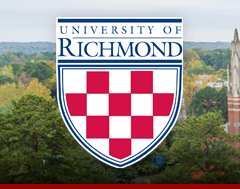Date of Award
4-28-2023
Document Type
Thesis
Degree Name
Bachelor of Science
Department
Biology
First Advisor
Carrie Wu
Abstract
Invasive non-indigenous species pose a serious threat to native biodiversity and ecosystem functioning. Understanding how species performance varies under conditions in the current and potential invaded range can help to predict dynamics of the invading species in its new environment. Plants with the ability to alter growth or vegetative architecture in response to variation in light regimen may be favored in landscapes that experience frequent disturbance, which is known to be a key mechanism promoting plant invasion, as they may be able to exploit novel niches. Seed bank persistence may also play a critical role in successful plant invasion, as seed viability for an extended time increases species survivability in unfavorable conditions, maintains population genetic diversity, and may allow re-invasions. This study investigated seed bank longevity and the effect of light intensity on germination of wavy leaf basketgrass (Oplismenus undulatifolius), a newly established invasive species in US mid-Atlantic forest understories. We germinated wavy leaf basketgrass seeds collected across five years from the original site of introduction at Patapsco Valley State Park, MD under four light conditions in a controlled growth room. Seeds remained viable for at least 9 years, but showed a dramatic drop after 7 years, while light intensity did not significantly impact seed germination. Our study shows the importance of evaluating environmental and temporal effects on germination responses, since the scope of surveillance may need to be expanded based on new information about environmental tolerance. Long-term monitoring may be necessary to effectively control invasive plant populations capable of forming a persistent seed bank.
Recommended Citation
Pham, Dominique Hong-Duc, "Seed bank dynamics and germination under differential light regimes of the emerging invasive species wavyleaf basketgrass ( Oplismenus undulatifolius)" (2023). Honors Theses. 1681.
https://scholarship.richmond.edu/honors-theses/1681
Included in
Agriculture Commons, Biology Commons, Plant Breeding and Genetics Commons, Terrestrial and Aquatic Ecology Commons
